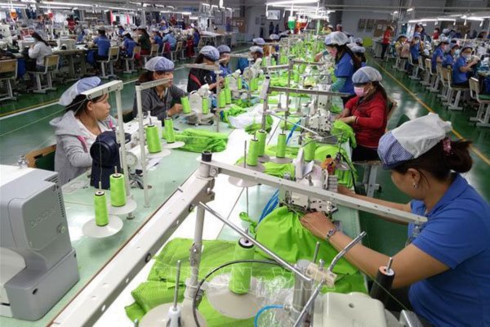 |
| The textile sector faces a number of challenges as it seeks new markets including increased trade stress. |
Data from the Ministry of Industry and Trade (MoIT) showed that since the beginning of the year, the textile industry has achieved positive results. Compared to the same period last year, the industry has grown by more than 12 per cent.
The industry has posted growth in production of costumes (up 8.8 per cent), fabric made from natural fibres (3.9 per cent), synthetic fibres (19.5 per cent) and casual clothes (8.7 per cent).
So far this year, textile and garment export turnover is estimated at $9.43 billion, an increase of 9.8 per cent from the same period last year.
According to Le Tien Truong, general director of the Viet Nam National Textile and Garment Group (Vinatex), Viet Nam’s garment export industry is growing. Orders to Vietnamese enterprises have increased by 8-10 per cent over the same period in 2018.
Truong also emphasised the initiative of textile enterprises in seeking new markets. A market tour by Vinatex and 10 other large businesses in May 2019 to seek importers in Canada – a member of the Comprehensive and Progressive Trans-Pacific Partnership (CPTPP) – shows the determination of industry leaders to increase Viet Nam’s market share abroad.
“Meetings with importers have been taking place, and a number of importers with revenue of up to 1 billion Canadian dollars such as VF, Atlantic Sportwear and Giant Tiger have contacted Vietnamese textile enterprises,” Truong said.
In April, the International Exhibition of Textile and Garment Industry - Fabric & Garment Accessories in HCM City served as another opportunity for textile enterprises to expand their market. With more than 1,000 international suppliers attending from 24 countries, the exhibition helped businesses get information about the latest production technologies and find ways to meet the needs of domestic and international buyers.
Viet Nam’s textile and garment is appreciated by foreign partners for both its quality and order fulfilment time.
Cao Huu Hieu, Vinatex’s managing director, said that medium and large textile enterprises in Viet Nam have worked to meet social responsibility and Green Label criteria from partners.
However, the sector also faces of a number of challenges. For example, increased trade stress is affecting service prices.
In addition, strong exporting countries consider Viet Nam a rival to curb. In order to continue growing at the same rate, enterprises need to innovate with specific solutions. They must develop a competitive tool set including focusing on technological innovation, saving energy and improving the productivity of synthetic factors through solutions such as automation.
It is necessary to link businesses through common information, artificial intelligence and big data, Hieu said. — VNS

China's textile factory project suspended in Quang Ninh
Local authorities in Quang Ninh Province has just suspended the construction of a textile factory project of China’s Texhong Co., Ltd. as they failed to complete legal procedures.

VN textile and garment producers could face problems meeting CPTPP, EVFTA standards
Vietnam’s textile and garment may not be able to take full advantage of the preferential tariffs of two important FTAs, CPTPP and EVFTA, because of problems in input materials.

Vietnam's garment, textile industry expected to lure much foreign investment this year
According to economic experts, the garment and textile industry of Vietnam will advance further in global market thanks to several existing advantages such as skilled laborers with sophisticated technique.
 Vietnam’s textile and garment industry is striving to achieve export turnover of more than US$40 billion in 2019, a year-on-year increase of 14-15 per cent.
Vietnam’s textile and garment industry is striving to achieve export turnover of more than US$40 billion in 2019, a year-on-year increase of 14-15 per cent.